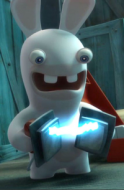auntblabby
Veteran

Joined: 12 Feb 2010
Gender: Male
Posts: 114,608
Location: the island of defective toy santas
auntblabby
Veteran

Joined: 12 Feb 2010
Gender: Male
Posts: 114,608
Location: the island of defective toy santas
auntblabby
Veteran

Joined: 12 Feb 2010
Gender: Male
Posts: 114,608
Location: the island of defective toy santas
auntblabby
Veteran

Joined: 12 Feb 2010
Gender: Male
Posts: 114,608
Location: the island of defective toy santas
auntblabby
Veteran

Joined: 12 Feb 2010
Gender: Male
Posts: 114,608
Location: the island of defective toy santas
auntblabby
Veteran

Joined: 12 Feb 2010
Gender: Male
Posts: 114,608
Location: the island of defective toy santas
nick007
Veteran


Joined: 4 May 2010
Gender: Male
Posts: 27,761
Location: was Louisiana but now Vermont in capitalistic military dictatorship called USA
auntblabby
Veteran

Joined: 12 Feb 2010
Gender: Male
Posts: 114,608
Location: the island of defective toy santas
auntblabby
Veteran

Joined: 12 Feb 2010
Gender: Male
Posts: 114,608
Location: the island of defective toy santas







